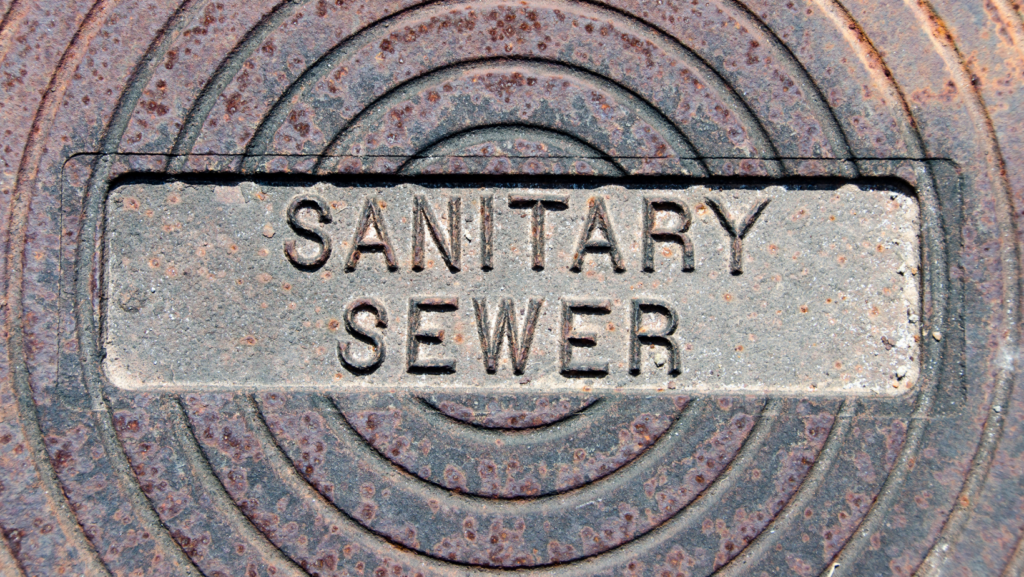DC Sewer Lines And Homeowners
Your connection to the District of Columbia’s public sewer line: Where it is, and who bears responsibility for breaks and damage?

The forgotten Pipe
We tend to ignore sewer lines until something goes dreadfully wrong. Because they’re buried underground and motoriously difficult to inspection prior to a property sale, this expensive component of DC homes doesn’t get the attention it requires until damage is done.
When you become a DC home owner, it’s good practice to have your sewer lines inspected. As the homeowner, you’ll be able to provide a qualified plumber with the access needed to send a camera scope down the line to inspect for bellies, clogs and breaks.
Whose problem is it if issues are found? That depends on where the problem lies.
Where The Line Is Drawn
In the District of Columbia, DC WASA is responsible for sewer lines at/past the city connection, at the boundary of your property line. The District’s code states:
- § 9–203.05 Area between property line and building restriction line
- Any area between the property line and the building restriction line shall be considered as private property set aside and treated as public space under the care and maintenance of the property owner.
- The use of this area shall be controlled by the District of Columbia police regulations with respect to the use of public space and the projection of buildings beyond the building line. The District shall have a right-of-way through this area for sewers and water mains free of charge.
- The Mayor may build sidewalks on this area if in the judgment of the Mayor the space between the street lines is not sufficient to permit the construction of sidewalks within the street lines.
Bullet Points
- Find your lot lines & setback
- Determine whose break it is
- Periodically scope your sewer lines
Caren L
While other agents said, “This is what you need to do;” The Isaacs Team said, “We can do this for you!” Our process was smooth and quick, and they designed a strategy and negotiated a sale well above our asking price; and a purchase price below asking – both in the same market.
Where Are My DC Property Lines?
Determining the front property line location, including easements, is key. Start with the survey you may have received from the title company when you purchased your home, then use these resources to narrow it down:
FRONT SETBACKS AND BUILD-TO LINES
Front setback and build-to regulations control the relationship of buildings to street lot lines and regulate the distance between a building and a front lot line. A lot may have more than one street lot line, and therefore more than one front setback.
When a zone has a front setback requirement, all buildings and structures located within it must be set back from the entire length of all street lot lines, except as specified in Subtitle B § 317.
Front setbacks are regulated by:
- A single setback distance measurement cited for a zone and applicable to all buildings and structures in that zone;
- A setback range cited for a zone, requiring all buildings and structures in the zone must be set back from a street lot line; or
- An “existing range of blockfront cited for a zone; requiring all buildings and structures in that zone to be set back from the street lot line by at least as much as the existing building on the blockfront closest to the street, and no more than the existing building on the blockfront furthest from the street.
RULES OF MEASUREMENT
Proposed building façades or structures facing a street lot line must be located a distance:
- No closer to the street than the point of the building façade closest to the street, based on all the buildings located along the blockface; and
- No further back from the same street than the building façade furthest from the street, based on all the buildings located along the blockface; and
- The building façade of an interior lot attached building must not be further forward or further back than the building façade of one of the immediately adjoining buildings.
A building façade is the façade of a building exclusive of the projections permitted through Subtitle B § 333.
If a lot has more than one street lot line, its owner may choose the street lot line that determines the application of any front setback requirement.
FRONT BUILD-TO LINES
When a zone has a front build-to requirement, the front façade of all buildings and structures must directly abut the build-to line.
- Front Setbacks and Build-to Lines – Subtitle B § 313
- Front Setbacks – Subtitle B § 314
- rules of Measurement for Front Setbacks for R Zones – Subtitle B § 315
- Front Build-to Lines – Subtitle B § 316
- Building Lines on Streets Less Than 90 Feet Wide. Subtitle § 6–401
When The Break Is On The DC Side
If you have a sewer line break on the city’s side, the solution is fairly simple. Call DC WASA and provide the exact location of the break, with the measured distance from your home. Once WASA confirms the break is their responsibility, they’ll repair or replace the problematic portion of the sewer line.
When You’re Unsure Where The Break Is
If you can’t determine the location of your property line, or aren’t sure where the break is, call a certified plumber in DC. They’ll use electronic meters and scoping equipment to find the break and document its location. If it’s on your side, they can use routing equipment to try to unclog the line, or give you an estimate for repair or replacement if the line is ruptured. If the break turns out to be on the city’s side, the plumber can notify WASA and give them the coordinates.

